Inside an Amish Grocery Store
Sunlight, starter cultures, and some old fashioned ideas that might be worth revisiting
Welcome to another edition of Willoughby Hills!
This newsletter explores topics like history, culture, work, urbanism, transportation, travel, agriculture, self-sufficiency, and more.
If you like what you’re reading, you can sign up for a free subscription to have this newsletter delivered to your inbox every Wednesday and Sunday and get my latest podcast episodes:
Super Consolidation
I’ve been giving a lot of thought lately to how we buy food in this country. Our modern supermarkets often have some regional identity tied to them and the impression of local ownership. If you’ve traveled in this country, you probably have some sense of where you can find Shaw’s versus Giant versus Publix versus Ralphs.
But when you dig into it, the actual ownership of these “local” supermarket brands is more consolidated than it appears, even when familiar names remain in use. Kroger is the parent company of nearly 20 regional brands like Ralphs, Fry’s, and Dillons. Albertsons also owns about 20 brands including Shaw’s, Star Market, Safeway, and Vons. Stop and Shop, Giant, Food Lion, and Hannaford are all owned by Dutch conglomerate Ahold Delhaize. What once started as small, local establishments have become big and national (or even international).
A combination of consolidated ownership of grocery stores, a similar consolidation of processed foods under a handful of conglomerates, and advances in the science of retailing mean that many of us are traveling down nearly identical aisles buying nearly identical food products regardless of our geography or what’s in season. The photo at the top of this post is of one of my local supermarkets, but with the branding removed in Photoshop. Without the logo, it really could be any supermarket in any part of the country
It wasn’t always this way. Modern supermarkets got their start in the 1930s and really exploded in growth post World War II, as Americans were settling in the suburbs.
Prior to that, a grocery store was a business that sold dry goods: flours, sugar, coffee, and canned goods. A butcher shop sold meat, produce came from a greengrocer, and milk and cheese came from a dairy. In other words, buying each of these products would involve visiting a different vendor. Most of these businesses would have been on a downtown Main Street, like the one that used to exist in tiny Gravity, Iowa, not in a shopping center surrounded by parking.
My great-grandparents ran an old fashioned grocery store outside of Saginaw, Michigan in roughly the 1950s after they sold their farm in rural Whittemore. I know a few family stories about that grocery store and have at least one photo that has survived, but to me it always represented a long forgotten way to do business, with random products stacked behind the register and a manual cash register for tallying purchases.
I grew up learning each aisle and sale hack for a modern supermarket from shopping alongside my mom, but the more consolidation that happens and the less processed food that we eat, the more I feel a bit alienated in a modern supermarket these days. Call me a traditionalist, but I’m starting to miss the old way of grocery shopping.
It turns out that I’m not alone, and there are places in this country where small grocers still survive for one reason or another. The big food companies tend to avoid opening supermarkets in the inner city or in sparse rural areas, leaving food deserts for the people that live in these places. There are also consumers that are seeking alternatives and are willing to travel to a specialty grocer to get products that would otherwise be hard to find at a chain supermarket. And there are some retailers that have clung to a dated business model and discovered there is a niche market for buying food the old fashioned way.
I’m hoping to occasionally profile many more of these small grocery operations in future issues of Willoughby Hills, as I feel strongly that one of the keys to building a healthier and more resilient food system is knowing the origins of your food, who grows it, who makes it, and who sells it.
Today will be the first installment in this series, taking a closer look at an Amish grocer that we love to frequent when we visit Lancaster County, PA. (If you’re a Willoughby Hills member, I shared a video of our trip to Amish country last week.)
Visiting Miller’s Natural Foods
There’s no reason that we should have found Miller’s Natural Foods. It has a small billboard attached to a shed at the side of the Old Philadelphia Pike and sits nearly a mile and a half off of that main road. It’s not designed to attract the attention of tourists.
We discovered it last summer quite by accident when we received a recommendation from a local woman while we shopped at another farm stand in the area. She wrote the address on the back of a scrap of paper and suggested we might like it. That paper is still in the center console of our RV.
Because it’s an Amish run business, there is very little information about Miller’s published online beyond reviews on sites like Yelp. They don’t have an official website and as far as I can tell, have not been profiled by any form of media beyond content creators that have stopped and visited. According to some accounts, the business has been there for more than 50 years (the Better Business Bureau lists the established date as 1968).
Miller’s sits in a modest building at the end of a small street in Bird in Hand, PA. It’s surrounded by Amish farmland, where it’s quite common to see a field being worked with a horse driven plow or seedlings planted by hand by groups of Amish workers crouched low to the ground in plain clothes. Buggies are just as common a site in the parking lot as cars.
There is no name on the front of the building, no posters in the window advertising sale items. It’s a sturdy looking building, but also incredibly plain. It could easily be mistaken for some kind of commercial warehouse or processing facility. There is a single wooden sign that identifies the business.
Inside, the store is just as plain as the Amish clothing, with very little adornments or signage. The products are lined neatly on the shelves, the prices are clearly marked, and the merchandise seems to speak for itself. The whole place projects a Ron Swanson vibe, who once advertised his construction business this way:
“Hire Very Good Building Company for your construction needs. Or do not. I am not a beggar.”
Being an Amish run store, there is very little electricity used in the store. What appear to be florescent panels on the ceiling are in fact skylights that reflect daylight and then diffuse it through a lens. The only indication that they aren’t electrically illuminated is when the sun passes behind a cloud and the store gets slightly darker, though it never feels too dark to see products or safely navigate the aisles.
There are gas lights mounted in the ceiling which can be lit in the evenings or on cloudy days, although I’ve never seen them in operation in my 3-4 visits over the last 2 years.
Of course, not using electricity in a grocery store can be problematic when it comes to refrigerated and frozen selections, but Miller’s appears to be using solar thermal panels to run their cooling equipment, as evidenced by the large solar thermal collectors on their roof. Usually collectors like this are used for heating water. Using them for cooling is a bit out of my expertise, but this article explains the basic principles if you’re interested.
Miller’s, as you may have guessed, is a great resource for people that like to cook their own food. There are some packaged snacks like cookies, crackers, chips, and cereals that meet their benchmark for natural products, but for the most part, you visit here for raw ingredients.
The store sells lots of products in “bulk” and I use quotation marks because it’s not quite a true bulk experience where you select what you’d like to purchase and pay by weight. Instead, many items including flours, rices, nuts, and dried fruit, come in pre-weighed bags that have a custom price sticker on them.
The store also sells a lot of fermented products like local sauerkraut (you know I’m a fan!), plus starter cultures to make your own cheeses, yogurts, and kefir.
As a natural foods grocer, the default here is organic produce, often locally sourced. The meats are grass fed. The eggs are pastured. The milk is raw. As somebody who follows a strict diet, it’s nice to not feel the need to check the labels of every product quite as closely as I do at other grocers, or to check them and realize that many things in the store fit our lifestyle.
Like any natural foods store, there are also aisles of herbal supplements and raw ingredients for homemade remedies like teas. This being an Amish store, it also has a small selection of appliances that don’t rely on electricity, or adapters that allow electric appliances to be battery powered using power tool rechargeable batteries. (Depending on the Amish community, there are varying rules about how electricity can be used, with most resisting any ties to the grid but allowing some appliances under certain conditions).
Lessons from Miller’s
I enjoy sharing interesting places with you in this newsletter, but I also like to keep an eye towards practicality and looking at what lessons can be learned and adapted. Here are a few things that impress me about Miller’s which I think are worth considering in our daily life:
The Role of the Sun: We tend to think of solar power as using expensive panels to convert sunlight to electricity, but it can also be as simple as smartly capturing daylight. The sun is free and abundantly available. By orienting the building towards the sun and adding skylights in strategic locations, the interior of the store is very bright all day. I would love to see other big box stores adapt this strategy of smartly harnessing daylight, lessening the reliance on artificial light when the sun is shining.
The Role of the Sun, Part II: Similarly, I am impressed with the use of solar thermal for refrigeration, if that is in fact what’s happening in the store. Imagine every supermarket, Target, or Wal-Mart (which have plenty of roof space) installing a similar system for their refrigeration!
Fair Pricing: One thing I haven’t revealed yet is that Miller’s is remarkably affordable, especially given that most of the food is organic or natural. We buy similar products at places like Whole Foods Market and find Miller’s to be cheaper on nearly every item we buy, sometimes significantly so. The overhead of running the store is incredibly low, and those savings are passed on to the customer.
Cash is Still King: I recently shared a video from K-Mart in 1992 and remarked at how strange it was to see people paying with cash. In Amish Country, cash is still the preferred way to pay and often the only way to pay. Having a finite amount of cash in my wallet forces me to be a bit more deliberate with how I spend my money. It was also nice to be reminded that money can be a physical item that changes hands and not simply a number on a screen as it feels like in the era of credit cards, direct deposit, and payment apps. It felt a bit like the joy of placing a needle in the grooves of a vinyl record after listening to digital music for so many years.
Bigger Isn’t Better: Our supermarkets seem to always be increasing in size. This is partially about offering more “variety” which often means slight alterations to processed foods- new varieties of Oreos or Doritos, for example. But shopping in a tiny market like Miller’s made me realize that having enough is just perfect. It’s a thread that I discussed on the podcast with Sarah Susanka and it’s something I’ve been giving more thought to in all aspects of life.
One (of many) Stops: Modern supermarkets attempt to have everything a customer could ever need under one roof: raw ingredients, prepared foods, health and beauty products, pet food, toys, etc. Miller’s has many necessities and can serve as one stop shopping in a pinch, but it also seems to be cognizant that it will be one of many stops for most shoppers. There is an amazing Amish farm just down the road from Miller’s which sells fresh produce. I bought a five pound bag of organic sweet potatoes from them on this trip for $3. There are other meat farms and dairies nearby too. Much like shopping in the old days, Miller’s can be smaller because it’s not trying to do everything.
I’ve written before about the lessons that we can learn from the Amish, and I think this extends to how they run their businesses and how they buy their food. Every time I visit Miller’s, I’m reminded that an oversized supermarket loaded with processed foods shouldn’t be the default, and in many cases only, way we buy food. There are other options, and they have their roots in the way we used to shop for food.
Miller’s Natural Foods is located at 2888 Miller Ln in Bird in Hand, PA.
Thanks for reading Willoughby Hills! Subscribe for free to receive new posts and support my work.
Related Reading
Maybe the Amish Are On To Something
Getting Acquainted with Wendell Berry
If you’ve missed past issues of this newsletter, they are available to read here.





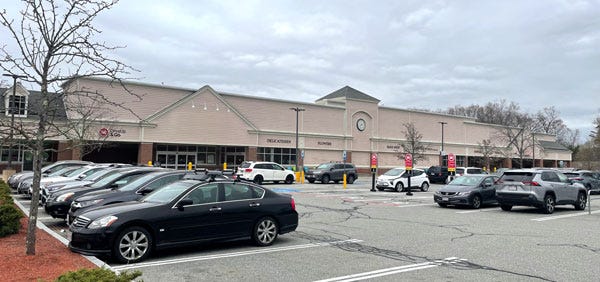

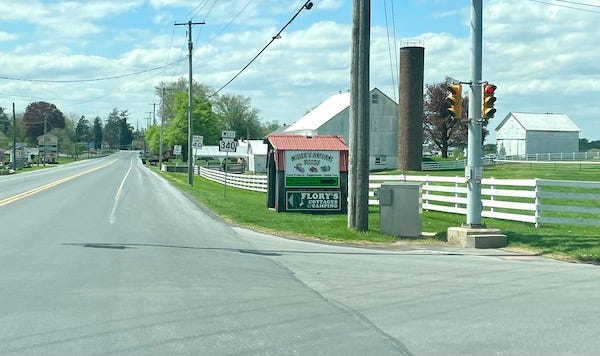

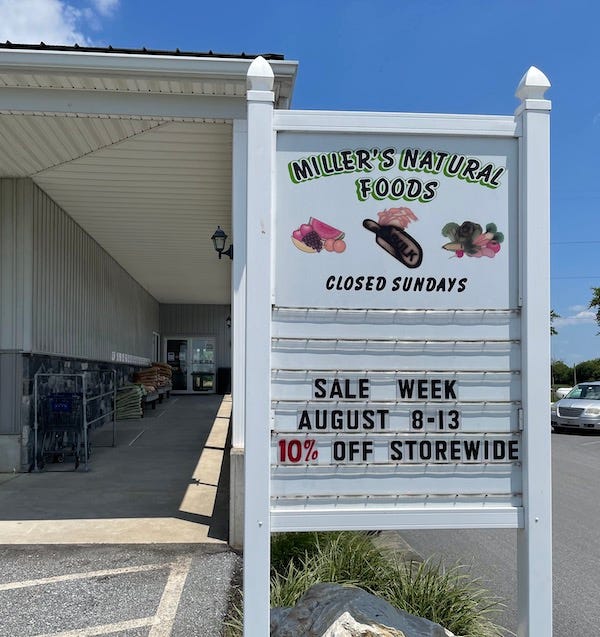
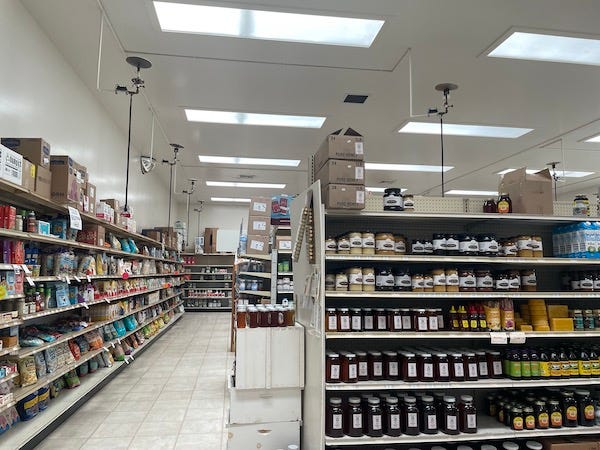
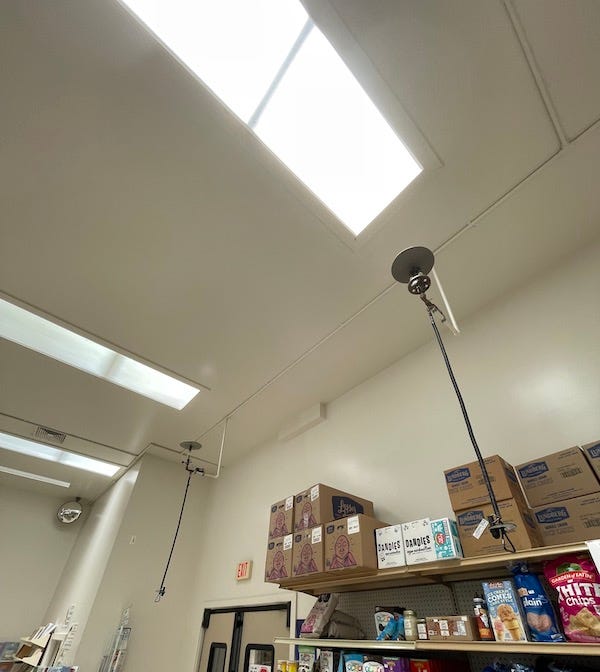
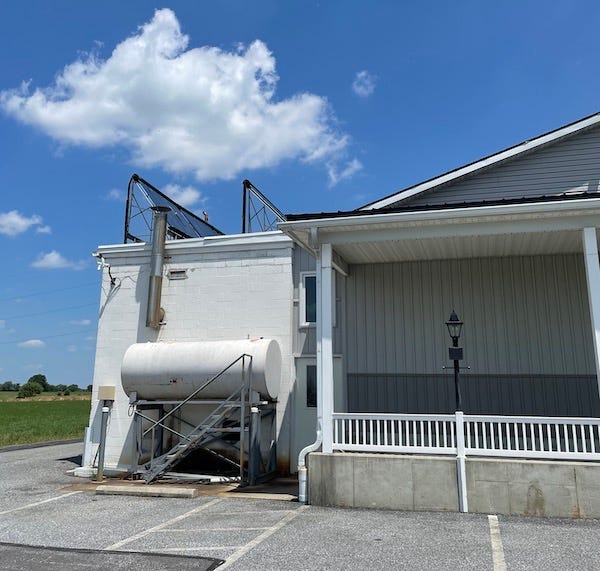
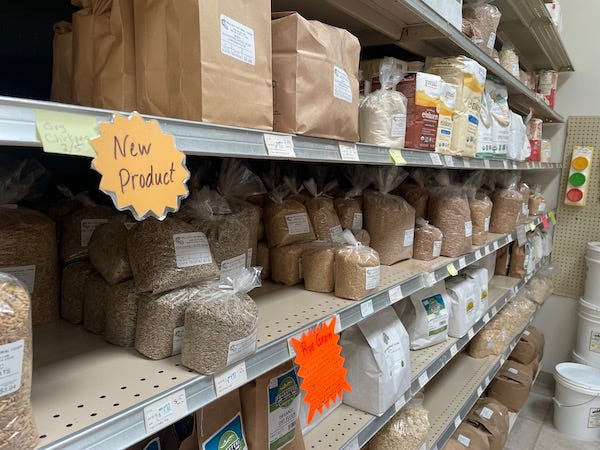
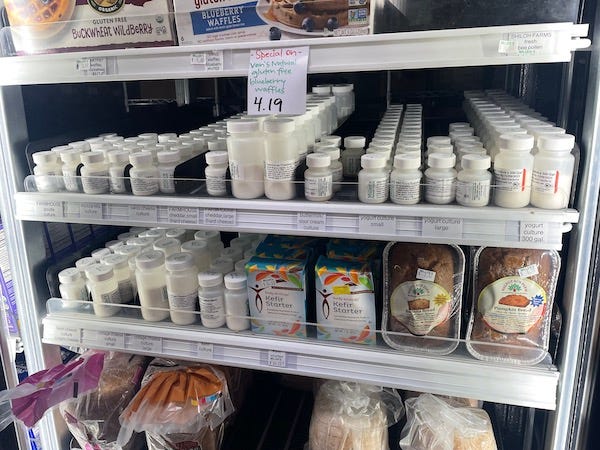
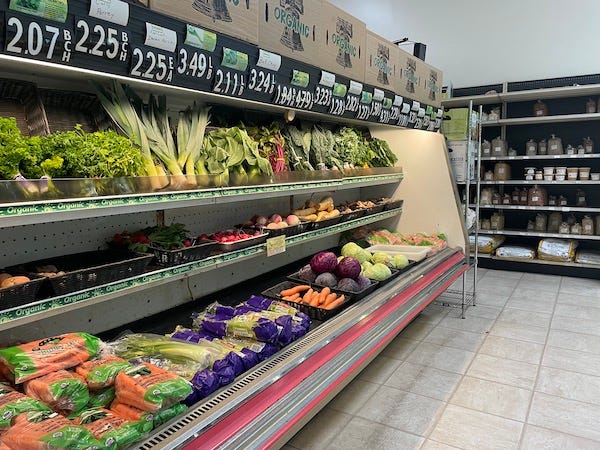

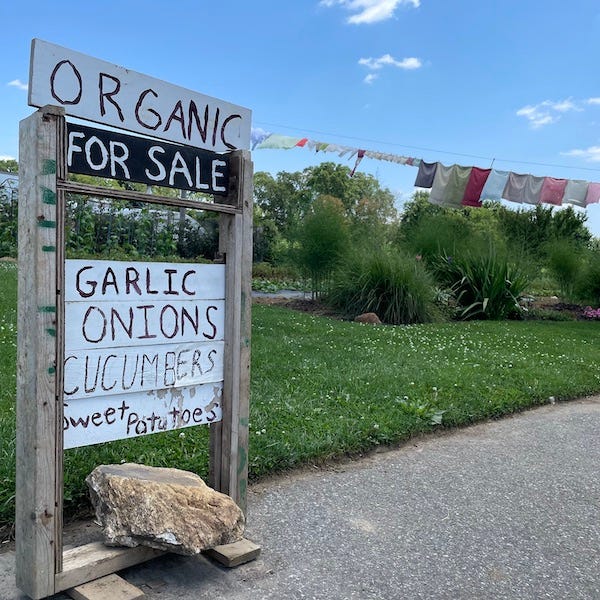
I (perhaps obviously) love this so much! I am reading this book right now, about the history of general stores in Nova Scotia, I bet you'd love it!
https://nimbus.ca/store/a-little-of-everything.html
Heath, I have found a sauerkraut that I love. My massage therapist recommended it to me. It is called Kraut and the garlic flavored is very good. It is active and I am anxious to get back to eating it after next week. I can't at the moment until my medical test is completed.